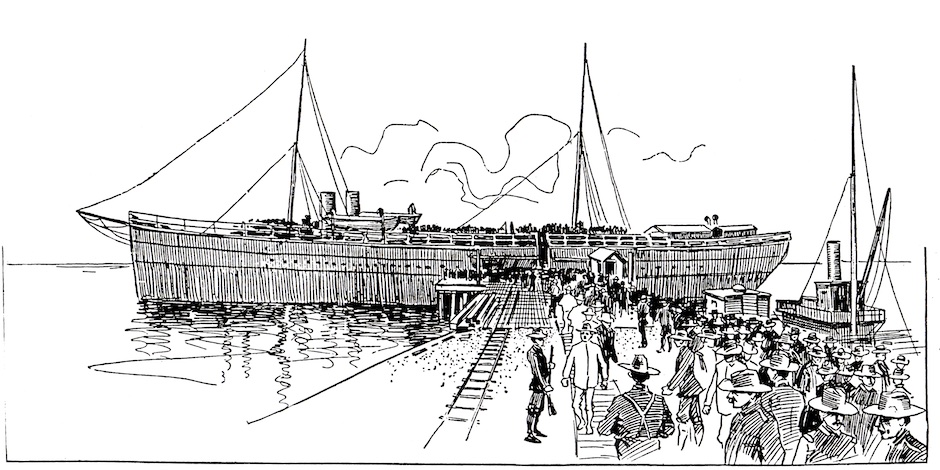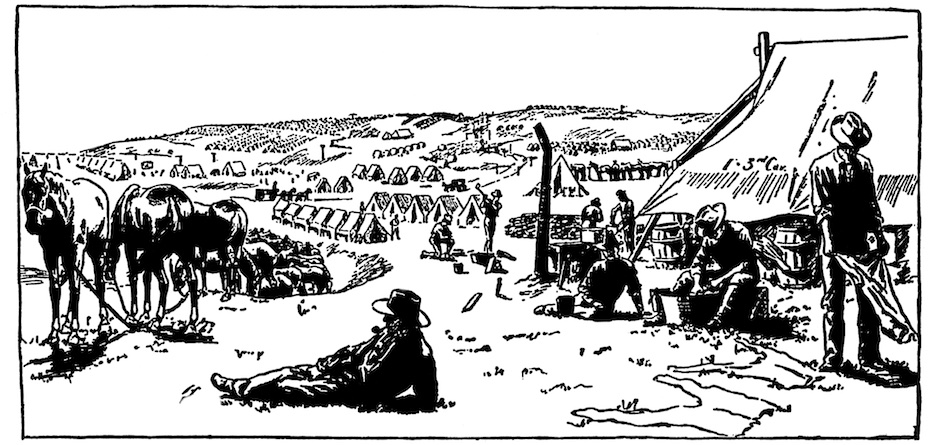CAMP WIKOFF, MONTAUK
___________________________________

CAMP WIKOFF ILLUSTRATED
Sixty Illustrations & Text Panels
Curated by Jeff Heatley.
————————————
Mulford Barn, East Hampton
June 18 / July 17
Weekends Only — Saturdays, 10 to 5. Sundays, Noon to 5.
EXHIBIT CLOSED
————————-
Sponsored by the East Hampton Historical Society.
—————————————————–
America’s First Veterans of a Foreign War Fought Overseas
Returned Home to Fort Pond Bay, Montauk,
Summer of 1898.
~~~~~~~~~~~~~~~~~~~~~~
Major General Shafter’s US Fifth Army Corps, including Roosevelt’s Rough Riders, defeated Spanish forces in battles near Santiago de Cuba in June and July, 1898. By late July, thousands of soldiers, who had spent weeks in the hot, humid Cuban chaparral, suffered from malaria, typhoid, dysentery and yellow fever.
More than forty transports brought 22,500 troops directly from Cuba to Fort Pond Bay. Another 7,000 troops arrived by train from southern military posts. Three-quarters of the troops arriving at Montauk suffered from tropical fevers, far exceeding the capacity of the General, Detention and Regimental hospitals. Moreover, army provisions were unsuited to the soldiers’ dietary needs.
The number of beds was increased in the camp hospitals; the American Red Cross was contracted to supply nurses; ‘food delicacies’ were delivered to the camp from local sources, as well as supplies from New York City and Newport. Conditions at Camp Wikoff gradually began to improve.
On Saturday, September 3rd – “Montauk’s Great Day” – President William McKinley toured camp hospitals and addressed 5,000 cheering troops on Montauk’s Great Plain, telling them, “I bring you the gratitude of the nation, to whose history you have added by your valor a new and glorious page.”
On September 13th, Col. Theodore Roosevelt bid farewell to the Rough Riders, telling them, “You cannot imagine how proud I am of your friendship and regard.” In appreciation of his leadership, the Rough Riders present him with Frederic Remington’s Bronco Buster statue.
On September 26th, General Joseph Wheeler said of Camp Wikoff: “I think the camp was well laid out, considering the rapidity with which it had to be constructed. When Camp Wikoff was most populous, there were twenty-eight square miles of tents, and the scene presented was most beautiful.”
____________________________________________

~~~~~~~~~~~~~~~~~~~~~~

———————————————————
Visit: AAQ/Portfolio/Art — Camp Wikoff, Montauk Point: Illustrations / August, 1898
AAQ/Portfolio/Art — Camp Wikoff, Montauk Point: Illustrations / September & October, 1898
~~~~~~~~~~~~~~~~~~~~~~~~~~~~~~
Victor — And Victim / New York Herald, August 31, 1898
Landing Scene at Montauk Pier / Chicago Tribune, August 31, 1898
Camp Scene – Sunday Afternoon / New York Herald, September 4, 1898
_________________________________________________________
